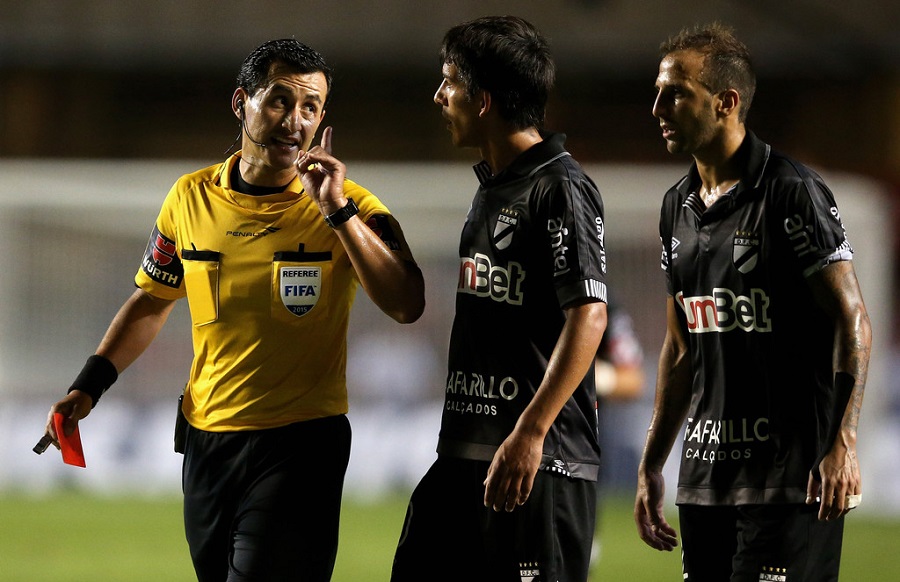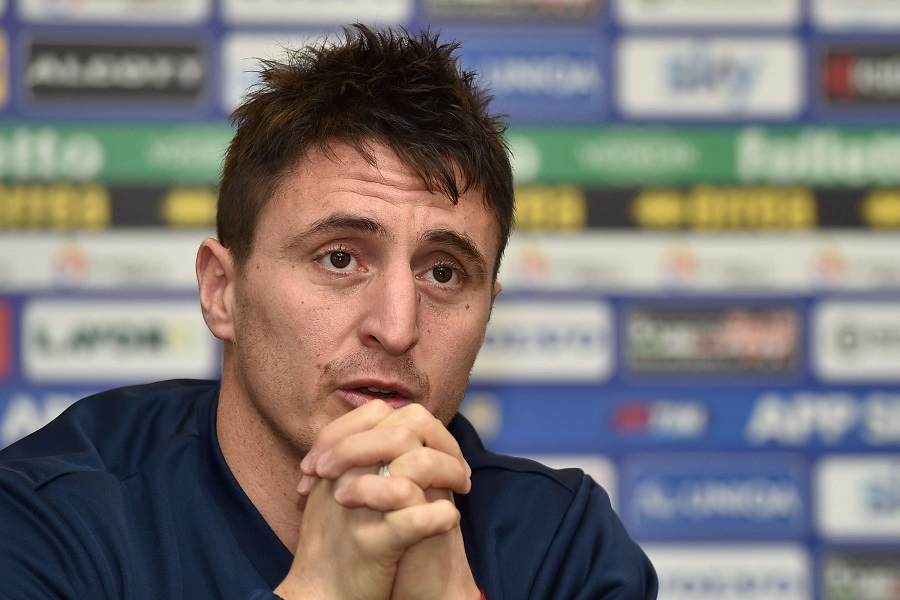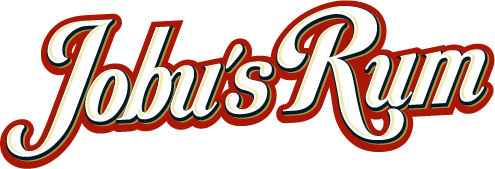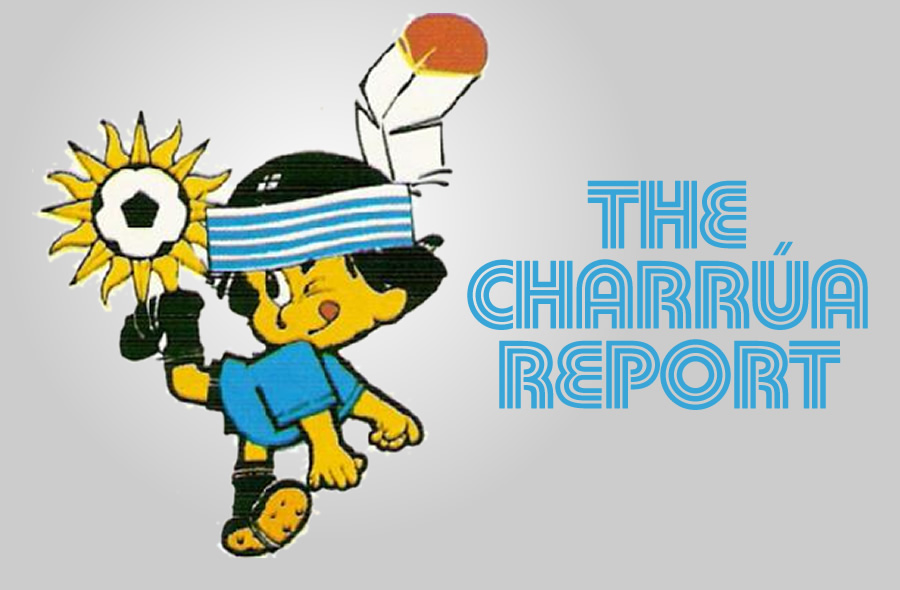Hello fans! It’s El Bolso once again with another Charrúa Report. There were no games this week in the Uruguayan League because of the country’s Presidential transition, which isn’t the worst thing in the world for a struggling Nacional team. There were two big news items for the Tricolores this week: first, Gastón Pereiro was given a few days off, which is understandable given that he spent most of the Summer break playing for Uruguay’s U20 National Team. Hopefully he will come back rested and ready to help pull Nacional back to the top of the League standings.
As for the other new bit of business, it seems that next week’s League game against El Tanque (the only team that managed to take points away from Nacional in the Apertura) may include the return of Sebastián “El Loco” Abreu to the Nacional lineup. They didn’t want him back, but they couldn’t pawn him off on another team, so El Loco has been training with the team and quietly waiting for an opportunity. After a rash of injuries to the attacking corps, it looks like he may be needed to fill out the bench when Nacional tries to get back to winning form. We’ll see what happens.
U17 South American Championship Preview

Like the U20 tournament we just went through, the U17 South American Championship is held every other year (also in odd-numbered years), and it serves as the qualifying phase of the category’s World Cup. The players are younger and therefore less well known; unlike the older kids, it’s rare to see players that have already made a mark on a top division team. The level of play is also appreciably lower, since these are players that are still relatively early in their development process. In short, you pretty much watch this so 5 years down the road you can say you were there when the next global superstar first hit the limelight. The tournament was first held in 1985 in Argentina, and this will be the third time Paraguay hosts.
Brazil once again owns bragging rights, having won 10 of the 15 tournaments so far. Argentina is next with three titles, with Colombia and Bolivia having won one each. The best Uruguay has been able to do is second place, achieved in 1991, 2005, and 2011. The Celestes have, however, provided the last two tournament top scorers: Franco Acosta, who was one of Uruguay’s stars in the just completed U20 tournament, did it in 2013, and Nacional’s own Juan Cruz Mascia took the prize in 2011.
The tournament format is identical to the U20 version: two groups of five teams each play single game round robins, and the top three teams from each group meet in a final round robin to determine the champion. The top four teams again qualify for the World Cup, to be held in Chile later this year. Group A is made up of host Paraguay, Brazil, Venezuela, Colombia and Peru. Group B consists of Uruguay, Argentina, Bolivia, Chile, and Ecuador. The tournament begins on March 4th, when the hosts will take on Venezuela, and it ends on March 29th. The games will be played at Dr. Nicolás Léoz Stadium in Asunción (cap. 10,000), Estadio Deportivo Capiatá in Capiatá (8,000), and Estadio Feliciano Cáceres in Luque (24,000). Unlike the recently finished U20 tournament, this one won’t feature a rejected Super Mario Bros bad guy as its mascot.
So what can La Celeste do? Well, scouting the talent at this level is not easy, but judging by recent performances, a World Cup berth is to be expected, and a title seems like a stretch goal. Uruguay has been making noise at this level recently; they made it to the last three World Cups and performed well each time. They made it to the quarterfinals in 2009 (losing in a penalty shootout to Spain), and were eliminated by the eventual champion in each of the last two tournaments – by host Mexico in the 2011 final game, and by Nigeria in the 2013 quarterfinals. This time around, the team will be coached by Santiago Ostolaza, whom you’ll hear plenty about if I ever get back to my History of Nacional series. It looks like Uruguay’s youth divisions are doing something right, and there’s reason to expect that this will continue this time around. I will, of course, be here in the coming weeks to tell you all about it.
Libertadores Cup Update

This wasn’t a good week for Uruguayan teams abroad. Uruguayan champ Danubio, fresh off a startling home loss against defending Libertadores titleholder San Lorenzo, travelled to Sao Paulo and promptly crapped the bed against the home team. The 4-0 loss pretty much sealed the team’s fate in a stacked group. Better luck next year, guys. Oh wait, you’re stuck mid-table in this year’s league tournament and probably won’t be able to participate next year? Oh well. Hey, that was some amazing season you had last year!
Wanderers, on the other hand, kept their hopes intact despite a loss. The Bohemios went into the famous La Bombonera stadium and played Boca Juniors even, barely losing 2-1. The loss doesn’t help, but the team showed that they can compete with anyone, at home or away. With Palestino beating Zamora FC in Venezuela in the other group game last week, it’s starting to look like it will be Chileans and Uruguayans fighting for second place behind Boca and a berth in the Round of 16. The two teams will play each other in the next two rounds, so we should know whether Wanderers are for real in just a few weeks. In the meantime, they can take comfort in knowing that they’re not embarrassing themselves like Danubio (I don’t mean to pick on the defending champs, I just have to call them as I see them).
Around the Globe

Well friends, Luis Suárez is officially on a roll. After his midweek performance in Manchester (which I’ve already discussed at length), el Pistolero added a weekend La Liga goal, making Granada’s keeper look foolish with a deft touch. Barcelona won 3-1, which coupled with Real Madrid’s 1-1 tie at home against Villarreal left the Blaugrana just two points behind the Merengues.
Former River Plate (sigh… no, not that one) and Uruguay Youth National Team forward Felipe Avenatti is also doing pretty well for himself. The 21 year old used every inch of his 6’4″ frame to outjump his marker and score in Ternana’s 1-1 tie with Avellino. That was Avenatti’s seventh goal in Serie B this season. Felipe has already seen action with the main Uruguay squad, and it looks like he wants to stay as part of the process.
Meanwhile, Uruguay’s preparation for the Copa América suffered an unexpected blow in the last few weeks. One of the fundamental principles in National Team coach Oscar “El Maestro” Tabárez’s process is to encourage his players to stay active, sometimes choosing to play at lesser teams rather than ride the bench elsewhere. At the start of the season forward Cristian “the Onion” Rodríguez, fresh off a La Liga title with Atlético Madrid but unhappy with his playing time there, left for Serie A’s Parma. The thinking was that he would get a lot more minutes there and stay fit for international competition. Well, that dream came to an end when Parma declared bankruptcy earlier this year. The team is looking for a solution to its economic woes, but as of right now it is no longer fielding a team (their games are being suspended for now). So Cebolla is in a tight spot: he can stay there and hope for the best, or return to Atlético to ride the bench and try not to get killed by a fellow Uruguayan in practice. There was a rumor earlier that he may end up providing Peñarol (the team where he started) with last minute reinforcements, but that possibility is no longer workable. At this point I feel bad for the guy. He always gives his all, but he’s been stuck as “the guy that comes in with three minutes left to slow down the game” for a couple of years in Madrid. Now, when it looked like he would get a fresh opportunity, this happens. I hope he can find a soft landing spot, and that he’s ready to go in June.
In other Celeste news, the Celeste Diegos (Lugano, Forlán and Pérez) are also logging negligible minutes for their respective teams, which is great news! This should prepare them for helping the National Team in the best way they can right now: by not playing.
And that’s it for this week, fans! See you next week with more Charrúa Report!
- The Charrúa Report: On the Right Foot - March 14, 2017
- The Charrúa Report: Campeones! - February 14, 2017
- The Charrúa Report: 48 Is Enough - January 11, 2017
- The Charrúa Report: Nico and the Sounders - December 14, 2016
- The Charrúa Report: King of the Single Rounders - December 12, 2016
- The Charrúa Report: Senseless - December 6, 2016
- The Charrúa Report: The Bum’s Rush - November 28, 2016
- The Charrúa Report: A Bump in the Road - November 16, 2016
- The Charrúa Report: Is It Priceline Time? - November 12, 2016
- The Charrúa Report: Closer to Fine - October 13, 2016


